What are the Top 10 Endangered Arctic Animals?
What happens when the unique creatures of the Arctic tundra face threats that challenge their very existence?
The Arctic tundra, a region known for its cold, desert-like conditions, is home to a diverse range of animals uniquely adapted to thrive in its harsh environment. Yet, these remarkable species are increasingly finding their survival in jeopardy.
In the Arctic tundra, the delicate balance of life is being disrupted. Polar Bears and Arctic Foxes are among the most visually symbolic of these struggles, with their habitats and food sources under threat from climate change and human activities. The Prairie Pigeon, already lost, serves as a stark reminder of what could happen to others.
The Arctic Peregrine Falcon faces challenges from human interference, highlighting the broader issue of human impact on wildlife. Meanwhile, the Wood Bison, Caribou, Narwhal, Musk Ox, Beluga Whale, and Pacific Walrus each represent a facet of the intricate ecosystem that is at risk. These animals not only struggle with the changing climate but also with human encroachment and the consequences of our actions on their natural habitats.
This overview provides a glimpse into the critical situation facing the wildlife of the Arctic tundra. It underscores the necessity for immediate and concerted conservation efforts to ensure the survival of these unique species and the preservation of their habitats.
Key Takeaways
The Arctic tundra stands as a critical sanctuary for numerous species facing the threat of extinction. These creatures are confronting several hazards that are jeopardizing their existence and necessitate urgent conservation efforts.
The key threats include overhunting, competition for resources, climate change, pollution, and human encroachment. These challenges are putting the Arctic tundra and its inhabitants at risk, highlighting the need for immediate action to protect this fragile ecosystem.
By uniting in conservation efforts, it is possible to secure a future for the unique wildlife and the Arctic tundra region they call home.
Arctic Fox and Red Fox Competition
Arctic and Red Fox Habitat Shifts
The Arctic tundra is witnessing a significant shift in its ecosystem dynamics, primarily due to the encroachment of Red Foxes into areas traditionally occupied by Arctic Foxes. This shift is attributed to the warming climate, which reduces ice cover, allowing Red Foxes to move further north. The competition for food and territory between these two species is intensifying, with Red Foxes often emerging as the dominant competitors due to their larger size and greater adaptability.
Impact on Arctic Fox Population
The presence of Red Foxes in the Arctic has led to a noticeable decline in the Arctic Fox population, especially in countries like Finland, Norway, and Sweden. The Arctic Foxes aren’t only losing their territories but also finding it increasingly difficult to hunt for the same prey as their Red Fox counterparts. The unique adaptation of the Arctic Foxes to change their fur color from white to brown, which once gave them an advantage in blending with their surroundings, is proving insufficient in the face of direct competition.
Urgent Conservation Efforts Required
To mitigate the decline of the Arctic Fox population, immediate and effective conservation strategies must be implemented. Protecting the Arctic Fox’s habitat, controlling the Red Fox population in critical areas, and monitoring ecosystem changes are pivotal steps. These efforts are essential to preserve the delicate balance of the Arctic tundra ecosystem and ensure the survival of the Arctic Fox, a species that plays a crucial role in the biodiversity of this region.
Polar Bears and Pack Ice Dependency
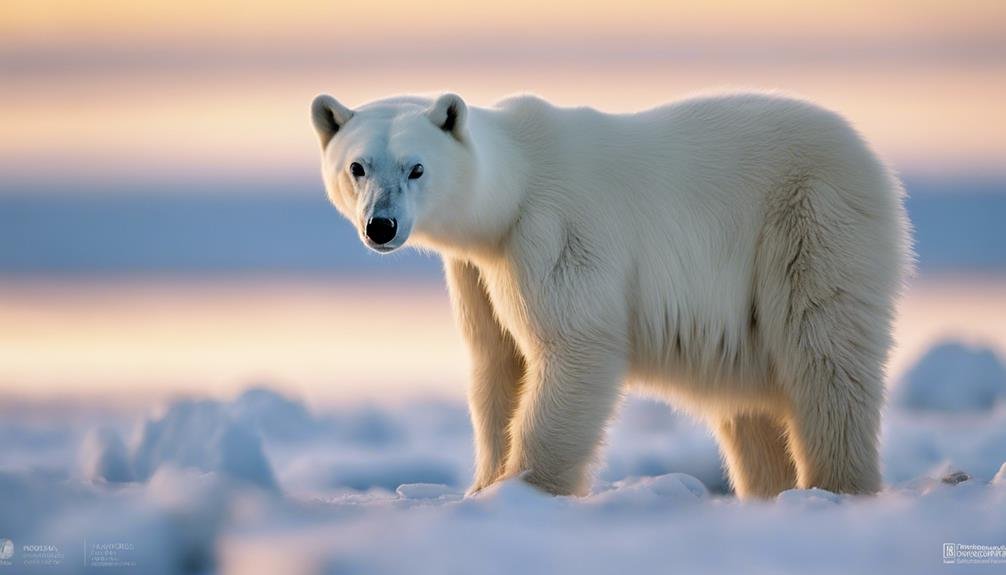
Arctic Ecological Balance and the Role of Polar Bears
Impact of Climate Shifts
Climate Change has significantly altered the Arctic’s landscape, particularly affecting the pack ice ecosystems. This shift not only poses a direct threat to the survival of Polar Bears but also destabilizes the marine life balance, impacting species reliant on ice-covered waters.
Conservation Efforts Through Hunting Management
Hunting Regulations have been implemented to safeguard Polar Bear populations. These laws are designed to mitigate the pressures from human activities, ensuring that the bears’ numbers are kept within sustainable limits. This approach is part of broader conservation strategies aiming to preserve Arctic biodiversity.
The Essence of Pack Ice for Polar Bear Survival
The pack ice serves as a critical hunting ground for Polar Bears, where they prey on seals. The diminishing ice cover, due to warming temperatures, severely hampers their ability to find food, threatening their survival. This situation highlights the interconnectedness of Arctic life and the importance of maintaining healthy ice habitats for the ecosystem’s overall vitality.
Prairie Pigeon (Eskimo Curlew) Extinction
Tragic End for the Prairie Pigeon
The Prairie Pigeon, also recognized as the Eskimo Curlew, has faced a heartbreaking conclusion to its existence. Since there have been no verified sightings since 1996, this species has been officially declared extinct. Despite concerted conservation initiatives, the disappearance of this bird marks a significant loss. The details surrounding the Eskimo Curlew’s decline are outlined in the following summary:
| Eskimo Curlew Sightings | Conservation Initiatives | Result |
|---|---|---|
| Last observed in Canada (1996) | Efforts to save the species were unsuccessful | Extinct |
The loss of the Prairie Pigeon emphasizes the critical need for immediate action in safeguarding other vulnerable species that inhabit the Arctic tundra.
Conservation Efforts: Too Little, Too Late
Attempts to protect the Eskimo Curlew and its habitat came too late to reverse its declining numbers. This situation underscores the importance of early intervention and sustained efforts in conservation to prevent similar fates for other species. The challenges faced in the conservation of the Eskimo Curlew provide valuable lessons on the urgency and strategies required for wildlife preservation.
A Call to Action for Arctic Tundra Conservation
The extinction of the Eskimo Curlew serves as a stark wake-up call for the need to protect the vulnerable ecosystems of the Arctic tundra. These areas are home to numerous species that depend on its unique habitat for survival. Preserving these environments and the wildlife they support requires a global commitment to conservation practices and awareness. The memory of the Prairie Pigeon implores us to act swiftly to safeguard the natural world.
Arctic Peregrine Falcon and DDT Contamination
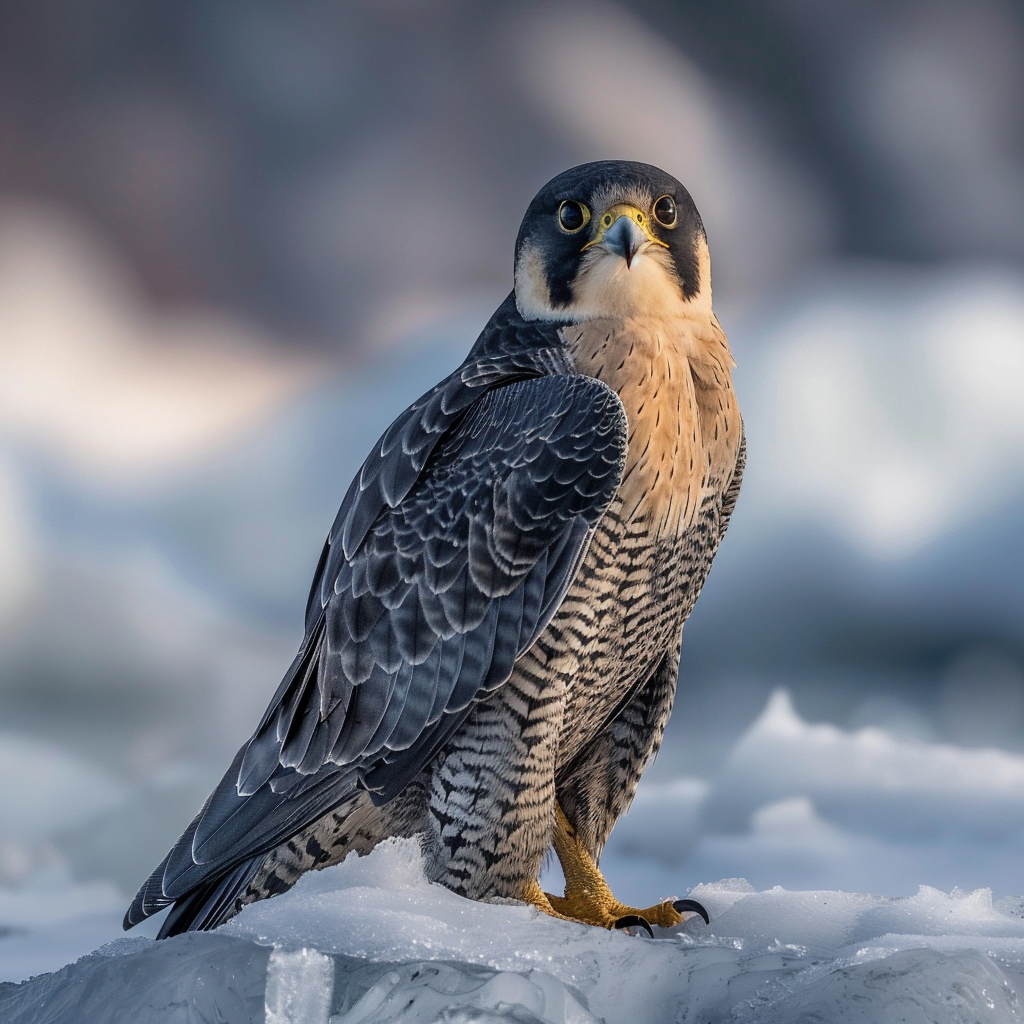
Following the disappearance of the Prairie Pigeon, the Arctic Peregrine Falcon is now at risk due to DDT contamination which threatens its ability to thrive.
The Threat of DDT
The Arctic Peregrine Falcons are experiencing a decline in their numbers due to their prey being contaminated with DDT. This pesticide, found in the ecosystem, poses a direct threat to their population by reducing their ability to reproduce successfully.
The Issue of Egg Fragility
Ingesting DDT leads to the production of thinner eggshells for the Arctic Peregrine Falcon. This fragility results in lower chances of offspring survival, directly impacting the future generations of this species.
Signs of Recovery
Despite the challenges posed by DDT, there are positive signs of population recovery for the Arctic Peregrine Falcon following the ban of DDT. This improvement indicates a hopeful path towards the restoration of their numbers in the wild.
The plight of the Arctic Peregrine Falcon underscores the negative impact human activities can have on wildlife. To safeguard the future of this remarkable bird, conservation measures are essential. These should include vigilant monitoring of DDT levels and efforts to preserve the Arctic tundra ecosystem where these falcons make their home.
Wood Bison Conservation Efforts
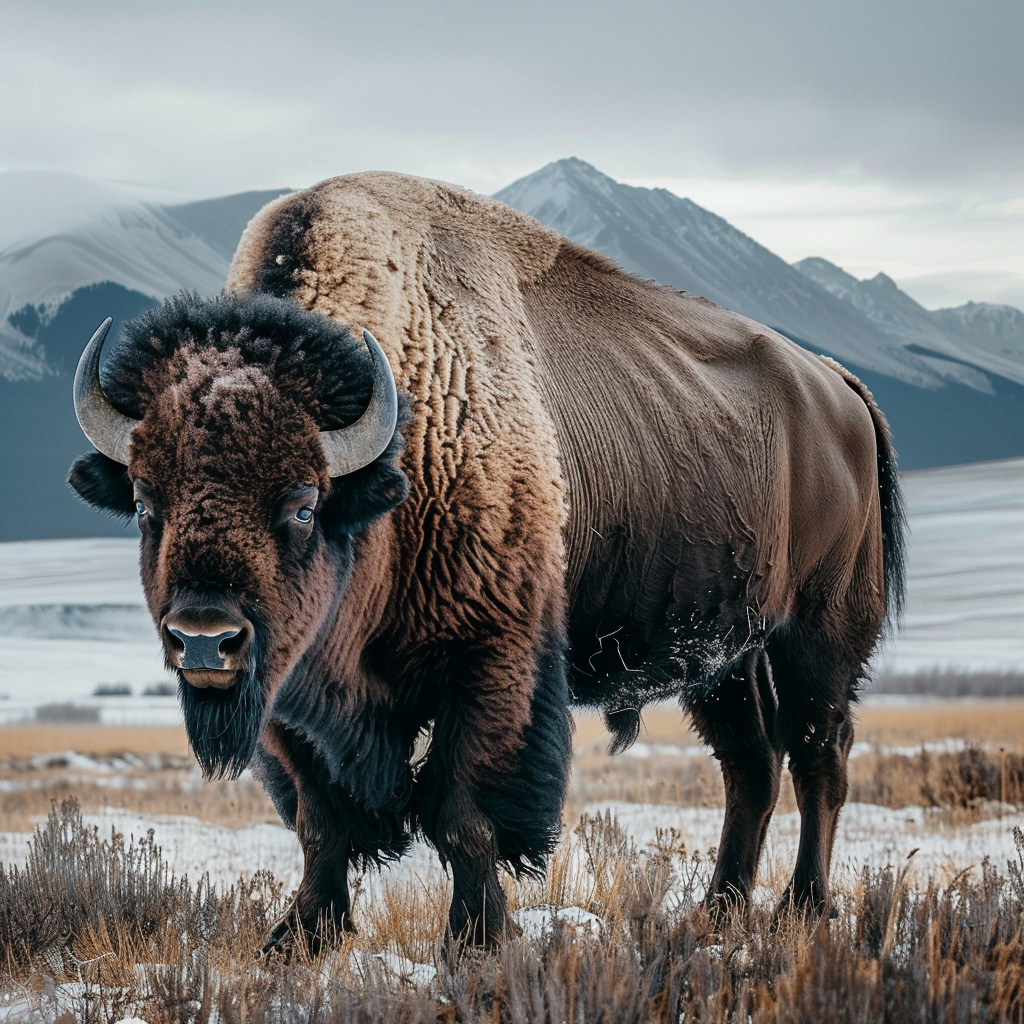
Monitoring and Strategic Reintroduction of Wood Bison
Efforts to conserve the Wood Bison population have unfolded through detailed monitoring and carefully planned reintroduction initiatives in specific regions. These endeavors focus on enhancing the diminished numbers and reestablishing the once prevalent Wood Bison in Alaska.
With rare sightings and wild herds mostly situated in conservation areas, it’s vital to keep a close watch on the species’ numbers to gauge the success of these conservation activities. The reduction in Wood Bison population over the years calls for continuous conservation work to safeguard this species’ future.
Through targeted reintroduction and vigilant population tracking, conservationists aim to halt the decline and promote a sustainable, flourishing future for the Wood Bison in their native environments.
Caribou Threats and Conservation Needs
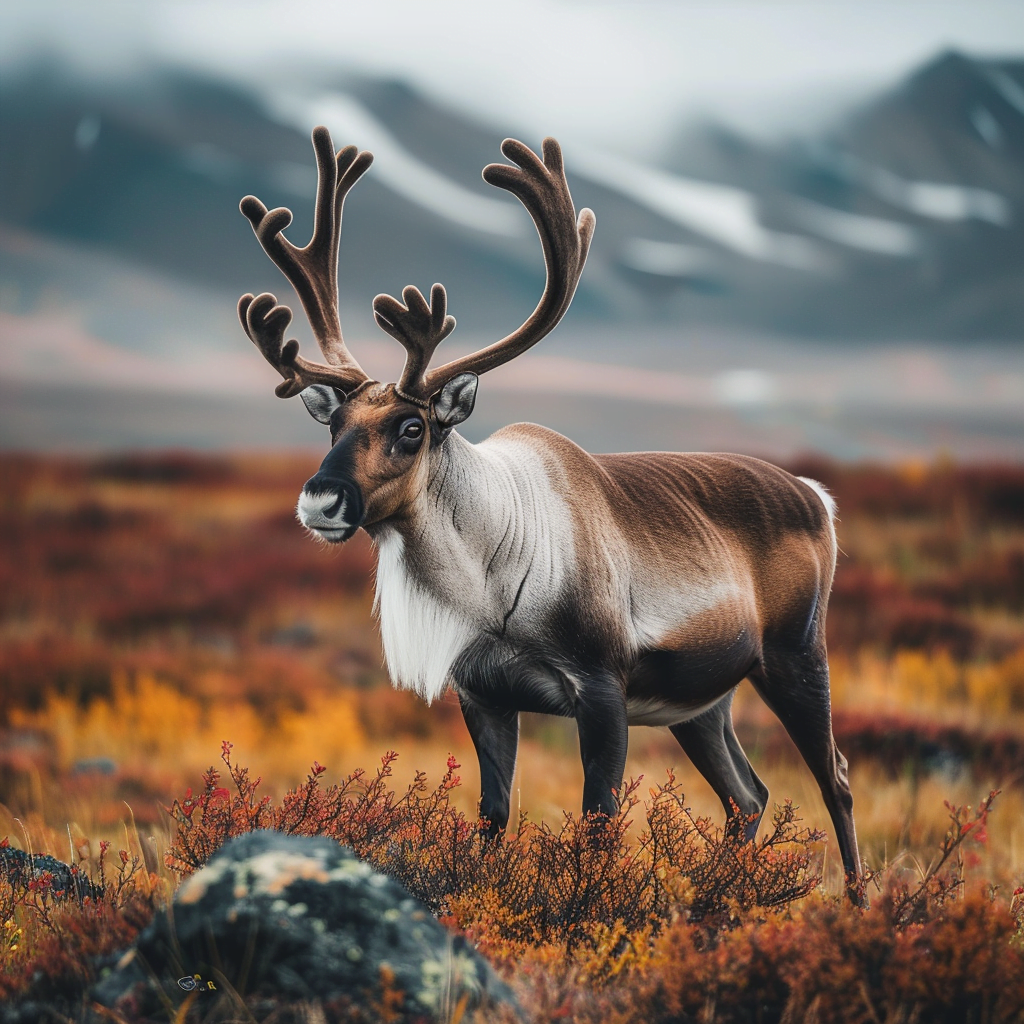
Challenges to Caribou Populations
Human actions significantly endanger Caribou, highlighting the critical need for conservation measures to protect them against habitat degradation, resource extraction, and illegal hunting. These majestic creatures of the Arctic are facing an uncertain future due to various anthropogenic pressures.
- Encroachment on Habitats: The expansion of deforestation and industrial operations into Caribou territories has dramatically shrunk their available living areas. This encroachment disrupts their migration patterns and reduces access to food sources, directly impacting their ability to survive and thrive.
- Combating Illegal Hunting: The illegal taking of Caribou for their meat, hides, and antlers has significantly reduced their populations. The implementation of stringent anti-poaching laws and community awareness programs is vital to curb this threat and ensure their numbers can recover.
- Protective Measures for Conservation: The establishment of protected areas, coupled with diligent monitoring of Caribou populations and the promotion of community-based conservation initiatives, are key strategies in the fight to preserve these iconic animals. Protecting their habitat while simultaneously tackling poaching is imperative for their ongoing survival and well-being.
Through dedicated conservation efforts, there’s hope for the Caribou. Protecting these animals not only conserves biodiversity but also maintains the ecological balance of their Arctic home.
Narwhal Decline and Hunting

Narwhal Population at Risk
The Narwhal, an iconic species of the Arctic, faces a significant decline in numbers. This alarming trend is primarily attributed to overhunting and environmental changes affecting their natural habitat. The ivory tusks of Narwhals, highly valued in the ivory trade, and their skin, rich in vitamin C, make them prime targets for hunters. The situation calls for immediate conservation efforts to prevent further depletion of their population.
Urgent Need for Conservation
With the threat of extinction hanging over them, Narwhals require robust conservation strategies. Human activities, including hunting and the effects of climate change, are major factors contributing to their vulnerability. Initiatives to protect their environment and regulate hunting practices are critical to ensuring the long-term viability of the Narwhal population in the Arctic.
Musk Ox Population Recovery
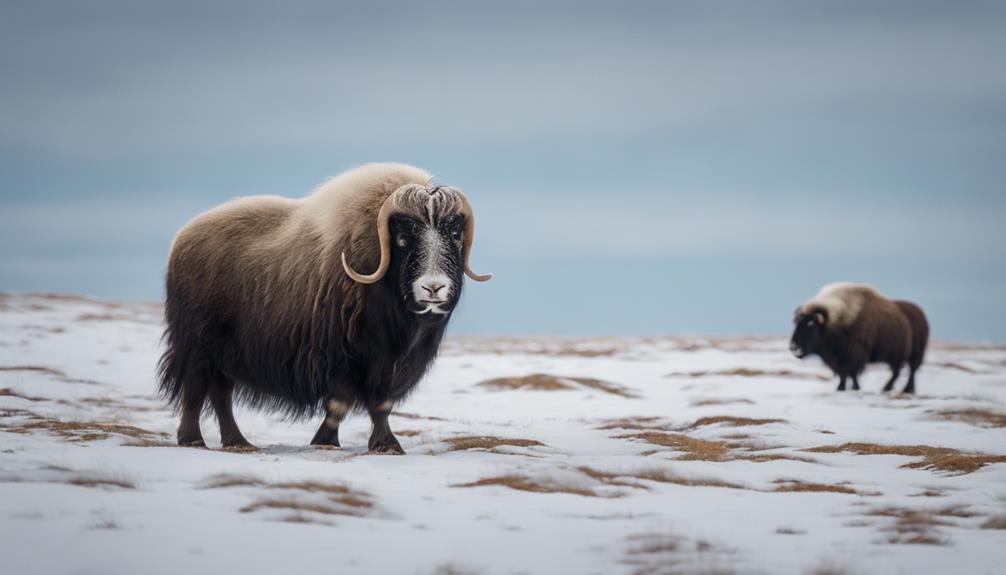
Arctic Wildlife Conservation: The Musk Ox Revival
Musk Ox: A Testimony to Resilience
Once teetering on the edge of extinction, the Musk Ox has been a resident of the Arctic for millennia. These magnificent creatures saw their numbers dwindle to a mere 500 due to various pressures. However, through dedicated conservation efforts, their population has witnessed a remarkable resurgence, now estimated at around 40,000 individuals. This rebound is a testament to the resilience of the Musk Ox and the effectiveness of wildlife conservation strategies.
The Role of Population Management
Key to the revival of the Musk Ox has been the implementation of thoughtful population management strategies. These strategies have been pivotal in balancing the Musk Ox’s presence within the fragile Tundra ecosystem. By carefully monitoring Musk Ox numbers and their habitat, conservationists have ensured that both the animals and their environment can thrive. This approach underscores the importance of sustainable practices in wildlife conservation.
Conservation Efforts: A Beacon for Arctic Preservation
The recovery of the Musk Ox population highlights the broader success of conservation efforts in the Arctic. This achievement not only secures a future for the Musk Ox but also preserves the unique biodiversity of the Arctic habitat. The story of the Musk Ox is a powerful reminder of the positive outcomes that are possible when commitment to conservation meets targeted action.
Through these concerted efforts, the Musk Ox has moved from vulnerability towards stability, showcasing the profound impact of conservation work in safeguarding our planet’s precious wildlife.
Beluga Whale Endangerment
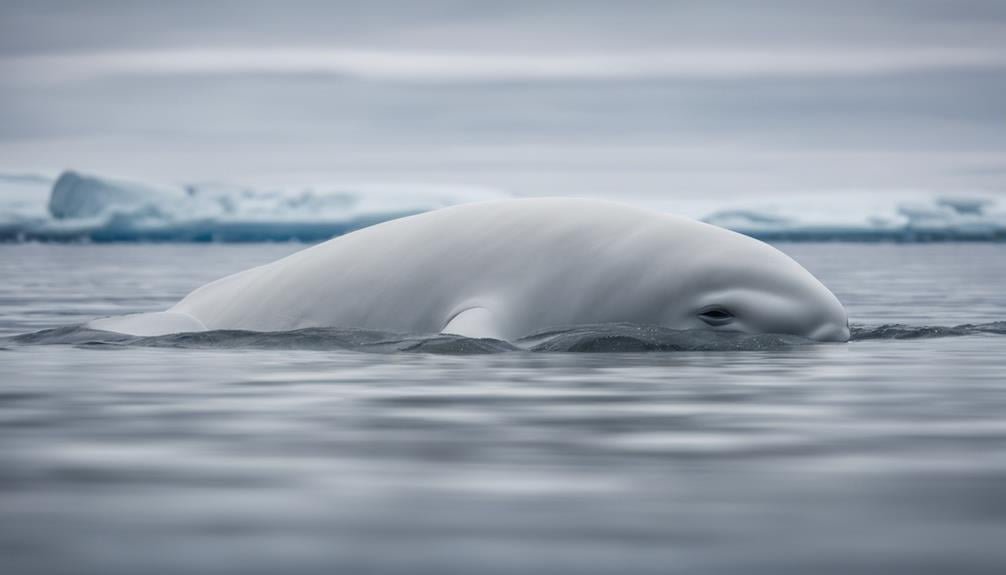
The Plight of the Beluga Whale
The Beluga Whale population is under severe threat due to ongoing fossil fuel extraction activities. This has led to a shocking 75% decline in their numbers, highlighting an urgent need for conservation efforts.
Conservation Urgency for Beluga Whales
With just 321 Beluga Whales documented in 2012, the species has been rightfully classified as endangered. The environmental disturbances caused by fossil fuel industries significantly compromise their survival prospects.
Strategies for Protection
To safeguard the future of the Beluga Whale, it’s imperative to implement conservation strategies. These should aim at mitigating the adverse effects of fossil fuel extraction on their habitats and promoting the significance of these marine mammals among the global community.
Pacific Walrus and Pack Ice Dependency

Pacific Walrus and Their Reliance on Sea Ice
Pacific Walrus, similar to their relatives in the Arctic, depend on the stability of sea ice for their existence in the ever-changing Arctic climate. The reduction of ice poses a dire challenge to their living conditions, edging them closer to the brink of endangerment. Highlighting this critical situation, here are three pivotal aspects:
- Endangered Environment: The habitat of the Pacific Walrus is under threat from the rapid disappearance of sea ice, crucial for their survival. This diminishing ice reduces the space available for resting and breeding, directly impacting their ability to thrive.
- Efforts for Walrus Protection: Protecting the Pacific Walrus is vital to ensure their continued presence in the Arctic’s delicate ecosystem. Initiatives focused on mitigating climate change and preserving sea ice are key to safeguarding these marine mammals.
- Role in the Arctic Circle: The presence and health of the Pacific Walrus are indicative of the overall well-being of the Arctic ecosystem. Their decline could lead to significant impacts on other species that rely on the ice-covered waters for survival, emphasizing the interconnectedness of Arctic life.
Frequently Asked Questions
How Do Arctic Foxes Change Their Fur Color From White to Brown?
Q: Why do Arctic foxes change their fur color from white to brown?
A: Arctic foxes undergo a fur color change due to evolutionary genetics and climate adaptation. Their bodies adjust melanin production according to the seasons, which allows them to seamlessly blend into either the snowy winter landscape or the summer’s brown tundra. This seasonal camouflage is critical for their hunting efficiency and overall survival in the harsh conditions of the Arctic tundra.
What Specific Conservation Efforts Are Being Made to Protect the Wood Bison Population?
Q: What are the conservation efforts in place for Wood Bison?
A: Conservation efforts for Wood Bison focus on habitat restoration, enhancing genetic diversity, and forming partnerships. These initiatives also include monitoring their migration to aid in population recovery. The goal is to prevent further decline of the Wood Bison and support sustainable conservation methods.
How Does DDT Contamination Affect the Fragile Eggs of the Arctic Peregrine Falcon?
How does DDT contamination impact the eggs of the Arctic Peregrine Falcon?
DDT contamination leads to the thinning of Arctic Peregrine Falcon eggshells. This condition increases the likelihood of the eggs breaking before the chicks can develop and hatch. The decreased egg viability directly affects the falcon’s reproduction success, posing a threat to its population and highlighting the need for targeted conservation efforts.
What Specific Factors Contribute to the Endangerment of Beluga Whales Beyond Fossil Fuel Extraction?
What factors are endangering Beluga whales beyond fossil fuel extraction?
Climate change is a significant factor affecting Beluga whales, leading to altered migration patterns and impacting their food sources. Pollution is another critical issue, disrupting the ecological balance and affecting the availability of prey for these whales. Conservation efforts are vital for the survival of Beluga whales in the face of these environmental challenges.
How Are Pacific Walrus Nurseries Impacted by the Thawing of Pack Ice in Their Habitat?
Q: How does the thawing of pack ice affect Pacific Walrus nurseries?
A: The melting of pack ice in the Pacific Walrus habitat disrupts their migration patterns and poses challenges to their adaptation to climate change. This alteration impacts the survival of the species by affecting the vital role that pack ice plays in their nurseries.
How Does the Decline of Arctic Starflower Impact Endangered Animals in the Arctic Tundra?
The decline of the Arctic starflower diminishes a key food source and habitat for various endangered species in the Arctic tundra. As vegetation becomes scarce, animals struggle to survive harsh conditions. For an “arctic starflower overview,” it is clear that conserving this plant is crucial for maintaining Arctic biodiversity and ecosystem balance.
Conclusion
To summarize, the Arctic tundra is a vital habitat for a broad spectrum of species that are currently on the brink of extinction. These animals are grappling with a host of survival threats that necessitate immediate and sustained conservation measures.
Addressing the challenges posed by overhunting, competitive pressures, climate change, environmental contamination, and human activities is critical for the preservation of these species and their natural environment. Taking swift action to mitigate these threats is essential for maintaining the ecological balance of this vulnerable ecosystem.
Through concerted efforts, it’s possible to safeguard the future of these remarkable animals and their Arctic tundra home.
What are the Top 10 Endangered Arctic Animals?
What happens when the unique creatures of the Arctic tundra face threats that challenge their very existence?
The Arctic tundra, a region known for its cold, desert-like conditions, is home to a diverse range of animals uniquely adapted to thrive in its harsh environment. Yet, these remarkable species are increasingly finding their survival in jeopardy.
In the Arctic tundra, the delicate balance of life is being disrupted. Polar Bears and Arctic Foxes are among the most visually symbolic of these struggles, with their habitats and food sources under threat from climate change and human activities. The Prairie Pigeon, already lost, serves as a stark reminder of what could happen to others.
The Arctic Peregrine Falcon faces challenges from human interference, highlighting the broader issue of human impact on wildlife. Meanwhile, the Wood Bison, Caribou, Narwhal, Musk Ox, Beluga Whale, and Pacific Walrus each represent a facet of the intricate ecosystem that is at risk. These animals not only struggle with the changing climate but also with human encroachment and the consequences of our actions on their natural habitats.
This overview provides a glimpse into the critical situation facing the wildlife of the Arctic tundra. It underscores the necessity for immediate and concerted conservation efforts to ensure the survival of these unique species and the preservation of their habitats.
Key Takeaways
The Arctic tundra stands as a critical sanctuary for numerous species facing the threat of extinction. These creatures are confronting several hazards that are jeopardizing their existence and necessitate urgent conservation efforts.
The key threats include overhunting, competition for resources, climate change, pollution, and human encroachment. These challenges are putting the Arctic tundra and its inhabitants at risk, highlighting the need for immediate action to protect this fragile ecosystem.
By uniting in conservation efforts, it is possible to secure a future for the unique wildlife and the Arctic tundra region they call home.
Arctic Fox and Red Fox Competition
Arctic and Red Fox Habitat Shifts
The Arctic tundra is witnessing a significant shift in its ecosystem dynamics, primarily due to the encroachment of Red Foxes into areas traditionally occupied by Arctic Foxes. This shift is attributed to the warming climate, which reduces ice cover, allowing Red Foxes to move further north. The competition for food and territory between these two species is intensifying, with Red Foxes often emerging as the dominant competitors due to their larger size and greater adaptability.
Impact on Arctic Fox Population
The presence of Red Foxes in the Arctic has led to a noticeable decline in the Arctic Fox population, especially in countries like Finland, Norway, and Sweden. The Arctic Foxes aren’t only losing their territories but also finding it increasingly difficult to hunt for the same prey as their Red Fox counterparts. The unique adaptation of the Arctic Foxes to change their fur color from white to brown, which once gave them an advantage in blending with their surroundings, is proving insufficient in the face of direct competition.
Urgent Conservation Efforts Required
To mitigate the decline of the Arctic Fox population, immediate and effective conservation strategies must be implemented. Protecting the Arctic Fox’s habitat, controlling the Red Fox population in critical areas, and monitoring ecosystem changes are pivotal steps. These efforts are essential to preserve the delicate balance of the Arctic tundra ecosystem and ensure the survival of the Arctic Fox, a species that plays a crucial role in the biodiversity of this region.
Polar Bears and Pack Ice Dependency

Arctic Ecological Balance and the Role of Polar Bears
Impact of Climate Shifts
Climate Change has significantly altered the Arctic’s landscape, particularly affecting the pack ice ecosystems. This shift not only poses a direct threat to the survival of Polar Bears but also destabilizes the marine life balance, impacting species reliant on ice-covered waters.
Conservation Efforts Through Hunting Management
Hunting Regulations have been implemented to safeguard Polar Bear populations. These laws are designed to mitigate the pressures from human activities, ensuring that the bears’ numbers are kept within sustainable limits. This approach is part of broader conservation strategies aiming to preserve Arctic biodiversity.
The Essence of Pack Ice for Polar Bear Survival
The pack ice serves as a critical hunting ground for Polar Bears, where they prey on seals. The diminishing ice cover, due to warming temperatures, severely hampers their ability to find food, threatening their survival. This situation highlights the interconnectedness of Arctic life and the importance of maintaining healthy ice habitats for the ecosystem’s overall vitality.
Prairie Pigeon (Eskimo Curlew) Extinction
Tragic End for the Prairie Pigeon
The Prairie Pigeon, also recognized as the Eskimo Curlew, has faced a heartbreaking conclusion to its existence. Since there have been no verified sightings since 1996, this species has been officially declared extinct. Despite concerted conservation initiatives, the disappearance of this bird marks a significant loss. The details surrounding the Eskimo Curlew’s decline are outlined in the following summary:
| Eskimo Curlew Sightings | Conservation Initiatives | Result |
|---|---|---|
| Last observed in Canada (1996) | Efforts to save the species were unsuccessful | Extinct |
The loss of the Prairie Pigeon emphasizes the critical need for immediate action in safeguarding other vulnerable species that inhabit the Arctic tundra.
Conservation Efforts: Too Little, Too Late
Attempts to protect the Eskimo Curlew and its habitat came too late to reverse its declining numbers. This situation underscores the importance of early intervention and sustained efforts in conservation to prevent similar fates for other species. The challenges faced in the conservation of the Eskimo Curlew provide valuable lessons on the urgency and strategies required for wildlife preservation.
A Call to Action for Arctic Tundra Conservation
The extinction of the Eskimo Curlew serves as a stark wake-up call for the need to protect the vulnerable ecosystems of the Arctic tundra. These areas are home to numerous species that depend on its unique habitat for survival. Preserving these environments and the wildlife they support requires a global commitment to conservation practices and awareness. The memory of the Prairie Pigeon implores us to act swiftly to safeguard the natural world.
Arctic Peregrine Falcon and DDT Contamination

Following the disappearance of the Prairie Pigeon, the Arctic Peregrine Falcon is now at risk due to DDT contamination which threatens its ability to thrive.
The Threat of DDT
The Arctic Peregrine Falcons are experiencing a decline in their numbers due to their prey being contaminated with DDT. This pesticide, found in the ecosystem, poses a direct threat to their population by reducing their ability to reproduce successfully.
The Issue of Egg Fragility
Ingesting DDT leads to the production of thinner eggshells for the Arctic Peregrine Falcon. This fragility results in lower chances of offspring survival, directly impacting the future generations of this species.
Signs of Recovery
Despite the challenges posed by DDT, there are positive signs of population recovery for the Arctic Peregrine Falcon following the ban of DDT. This improvement indicates a hopeful path towards the restoration of their numbers in the wild.
The plight of the Arctic Peregrine Falcon underscores the negative impact human activities can have on wildlife. To safeguard the future of this remarkable bird, conservation measures are essential. These should include vigilant monitoring of DDT levels and efforts to preserve the Arctic tundra ecosystem where these falcons make their home.
Wood Bison Conservation Efforts

Monitoring and Strategic Reintroduction of Wood Bison
Efforts to conserve the Wood Bison population have unfolded through detailed monitoring and carefully planned reintroduction initiatives in specific regions. These endeavors focus on enhancing the diminished numbers and reestablishing the once prevalent Wood Bison in Alaska.
With rare sightings and wild herds mostly situated in conservation areas, it’s vital to keep a close watch on the species’ numbers to gauge the success of these conservation activities. The reduction in Wood Bison population over the years calls for continuous conservation work to safeguard this species’ future.
Through targeted reintroduction and vigilant population tracking, conservationists aim to halt the decline and promote a sustainable, flourishing future for the Wood Bison in their native environments.
Caribou Threats and Conservation Needs

Challenges to Caribou Populations
Human actions significantly endanger Caribou, highlighting the critical need for conservation measures to protect them against habitat degradation, resource extraction, and illegal hunting. These majestic creatures of the Arctic are facing an uncertain future due to various anthropogenic pressures.
- Encroachment on Habitats: The expansion of deforestation and industrial operations into Caribou territories has dramatically shrunk their available living areas. This encroachment disrupts their migration patterns and reduces access to food sources, directly impacting their ability to survive and thrive.
- Combating Illegal Hunting: The illegal taking of Caribou for their meat, hides, and antlers has significantly reduced their populations. The implementation of stringent anti-poaching laws and community awareness programs is vital to curb this threat and ensure their numbers can recover.
- Protective Measures for Conservation: The establishment of protected areas, coupled with diligent monitoring of Caribou populations and the promotion of community-based conservation initiatives, are key strategies in the fight to preserve these iconic animals. Protecting their habitat while simultaneously tackling poaching is imperative for their ongoing survival and well-being.
Through dedicated conservation efforts, there’s hope for the Caribou. Protecting these animals not only conserves biodiversity but also maintains the ecological balance of their Arctic home.
Narwhal Decline and Hunting

Narwhal Population at Risk
The Narwhal, an iconic species of the Arctic, faces a significant decline in numbers. This alarming trend is primarily attributed to overhunting and environmental changes affecting their natural habitat. The ivory tusks of Narwhals, highly valued in the ivory trade, and their skin, rich in vitamin C, make them prime targets for hunters. The situation calls for immediate conservation efforts to prevent further depletion of their population.
Urgent Need for Conservation
With the threat of extinction hanging over them, Narwhals require robust conservation strategies. Human activities, including hunting and the effects of climate change, are major factors contributing to their vulnerability. Initiatives to protect their environment and regulate hunting practices are critical to ensuring the long-term viability of the Narwhal population in the Arctic.
Musk Ox Population Recovery

Arctic Wildlife Conservation: The Musk Ox Revival
Musk Ox: A Testimony to Resilience
Once teetering on the edge of extinction, the Musk Ox has been a resident of the Arctic for millennia. These magnificent creatures saw their numbers dwindle to a mere 500 due to various pressures. However, through dedicated conservation efforts, their population has witnessed a remarkable resurgence, now estimated at around 40,000 individuals. This rebound is a testament to the resilience of the Musk Ox and the effectiveness of wildlife conservation strategies.
The Role of Population Management
Key to the revival of the Musk Ox has been the implementation of thoughtful population management strategies. These strategies have been pivotal in balancing the Musk Ox’s presence within the fragile Tundra ecosystem. By carefully monitoring Musk Ox numbers and their habitat, conservationists have ensured that both the animals and their environment can thrive. This approach underscores the importance of sustainable practices in wildlife conservation.
Conservation Efforts: A Beacon for Arctic Preservation
The recovery of the Musk Ox population highlights the broader success of conservation efforts in the Arctic. This achievement not only secures a future for the Musk Ox but also preserves the unique biodiversity of the Arctic habitat. The story of the Musk Ox is a powerful reminder of the positive outcomes that are possible when commitment to conservation meets targeted action.
Through these concerted efforts, the Musk Ox has moved from vulnerability towards stability, showcasing the profound impact of conservation work in safeguarding our planet’s precious wildlife.
Beluga Whale Endangerment

The Plight of the Beluga Whale
The Beluga Whale population is under severe threat due to ongoing fossil fuel extraction activities. This has led to a shocking 75% decline in their numbers, highlighting an urgent need for conservation efforts.
Conservation Urgency for Beluga Whales
With just 321 Beluga Whales documented in 2012, the species has been rightfully classified as endangered. The environmental disturbances caused by fossil fuel industries significantly compromise their survival prospects.
Strategies for Protection
To safeguard the future of the Beluga Whale, it’s imperative to implement conservation strategies. These should aim at mitigating the adverse effects of fossil fuel extraction on their habitats and promoting the significance of these marine mammals among the global community.
Pacific Walrus and Pack Ice Dependency

Pacific Walrus and Their Reliance on Sea Ice
Pacific Walrus, similar to their relatives in the Arctic, depend on the stability of sea ice for their existence in the ever-changing Arctic climate. The reduction of ice poses a dire challenge to their living conditions, edging them closer to the brink of endangerment. Highlighting this critical situation, here are three pivotal aspects:
- Endangered Environment: The habitat of the Pacific Walrus is under threat from the rapid disappearance of sea ice, crucial for their survival. This diminishing ice reduces the space available for resting and breeding, directly impacting their ability to thrive.
- Efforts for Walrus Protection: Protecting the Pacific Walrus is vital to ensure their continued presence in the Arctic’s delicate ecosystem. Initiatives focused on mitigating climate change and preserving sea ice are key to safeguarding these marine mammals.
- Role in the Arctic Circle: The presence and health of the Pacific Walrus are indicative of the overall well-being of the Arctic ecosystem. Their decline could lead to significant impacts on other species that rely on the ice-covered waters for survival, emphasizing the interconnectedness of Arctic life.
Frequently Asked Questions
How Do Arctic Foxes Change Their Fur Color From White to Brown?
Q: Why do Arctic foxes change their fur color from white to brown?
A: Arctic foxes undergo a fur color change due to evolutionary genetics and climate adaptation. Their bodies adjust melanin production according to the seasons, which allows them to seamlessly blend into either the snowy winter landscape or the summer’s brown tundra. This seasonal camouflage is critical for their hunting efficiency and overall survival in the harsh conditions of the Arctic tundra.
What Specific Conservation Efforts Are Being Made to Protect the Wood Bison Population?
Q: What are the conservation efforts in place for Wood Bison?
A: Conservation efforts for Wood Bison focus on habitat restoration, enhancing genetic diversity, and forming partnerships. These initiatives also include monitoring their migration to aid in population recovery. The goal is to prevent further decline of the Wood Bison and support sustainable conservation methods.
How Does DDT Contamination Affect the Fragile Eggs of the Arctic Peregrine Falcon?
How does DDT contamination impact the eggs of the Arctic Peregrine Falcon?
DDT contamination leads to the thinning of Arctic Peregrine Falcon eggshells. This condition increases the likelihood of the eggs breaking before the chicks can develop and hatch. The decreased egg viability directly affects the falcon’s reproduction success, posing a threat to its population and highlighting the need for targeted conservation efforts.
What Specific Factors Contribute to the Endangerment of Beluga Whales Beyond Fossil Fuel Extraction?
What factors are endangering Beluga whales beyond fossil fuel extraction?
Climate change is a significant factor affecting Beluga whales, leading to altered migration patterns and impacting their food sources. Pollution is another critical issue, disrupting the ecological balance and affecting the availability of prey for these whales. Conservation efforts are vital for the survival of Beluga whales in the face of these environmental challenges.
How Are Pacific Walrus Nurseries Impacted by the Thawing of Pack Ice in Their Habitat?
Q: How does the thawing of pack ice affect Pacific Walrus nurseries?
A: The melting of pack ice in the Pacific Walrus habitat disrupts their migration patterns and poses challenges to their adaptation to climate change. This alteration impacts the survival of the species by affecting the vital role that pack ice plays in their nurseries.
How Does the Arctic Willow Support Endangered Animals in the Arctic Tundra?
The Arctic willow, also known as *Salix arctica*, plays a crucial role in the survival of endangered species in the Arctic tundra. Its nourishing leaves and stems provide essential food for herbivores like caribou and musk oxen. *Salix arctica plant facts* also show it offers shelter, helping small mammals survive harsh conditions.
Conclusion
To summarize, the Arctic tundra is a vital habitat for a broad spectrum of species that are currently on the brink of extinction. These animals are grappling with a host of survival threats that necessitate immediate and sustained conservation measures.
Addressing the challenges posed by overhunting, competitive pressures, climate change, environmental contamination, and human activities is critical for the preservation of these species and their natural environment. Taking swift action to mitigate these threats is essential for maintaining the ecological balance of this vulnerable ecosystem.
Through concerted efforts, it’s possible to safeguard the future of these remarkable animals and their Arctic tundra home.


